
As the rise of e-commerce, home deliveries, and the use of contractors across cities intensifies, many organizations are looking for efficient, cost-effective light commercial delivery vehicles that align with their sustainability objectives.
According to the IEA, electric light commercial vehicle (LCV), sales nearly doubled in 2022 compared to 2021, and the trend is only projected to increase as the tipping point for a lower total cost of ownership (TCO) for eLCVs has been reached, making a strong economic case for organizations seeking to maximize their fleet’s profitability.
If your organization is looking into eLCV possibilities, you might be wondering what the best option is. The reality is that there isn’t a one-size-fits-all – the best electric LCV for your business depends greatly on your needs. However, a key consideration will likely be around charging.
To help you compare 2024’s most anticipated electric light commercial vehicles, we’ve compiled below 5 of the most prominent models across Europe or the US, including how long they take to charge.
This article features the 5 most anticipated eLCV models (click for quick access):
Ford E-Transit Custom

Picture via Ford’s official website under copyright and image rights (for editorial use)
Europe’s best-selling light commercial van, the Ford Transit Custom, is getting an electric upgrade in 2024. Named Ford E-Transit Custom, this new electric variant retains many of the features that make the combustion engine model so popular – from its compact size and sub-2 meter height to fit into car parks to its customizable cargo space. But the E-Transit Custom also brings a host of new connectivity and convenience features to help boost productivity and enhance driver comfort, including built-in Ford Pro Telematics, 5G connectivity, a 13-inch digital touchscreen, and connected navigation.
Ford E-Transit Custom specs
Ford E-Transit Custom model variations
The Ford E-Transit Custom can be configured as a van with just the front seats or a double cab-in-van with an extra row of seats behind the driver, depending on your needs. The Ford E-Transit Custom comes in four trims with different features, exteriors, and interior styling: Trend, Limited, Trail, and Sport.
Ford E-Transit Custom Range
The Ford E-Transit Custom has an estimated 171 to 236 miles (275 to 380 km) range, depending on driving conditions.
Ford E-Transit Custom battery
The Ford E-Transit Custom has a 65 kWh battery.
Ford E-Transit Custom price
At the time of writing, Ford has not yet confirmed pricing for the E-Transit custom.
Ford E-Transit Custom release date
The Ford E-Transit Custom is expected to start shipping across Europe in 2024. There are currently no announced plans to ship outside of Europe.
Ford E-Transit Custom charging speed
The time it takes to charge up a Ford E-Transit Custom varies based on the power output and type of charger. We’ve calculated the charging time with the most common charging outputs at each charging level.
|
Charging level |
Charging output |
Charging times* |
|
Level 2 (AC) |
7.4 kW |
9h 45 min |
|
Level 2 (AC) |
11 kW |
6h 33 min |
|
Level 3 (DC) |
50 kW |
51 min |
|
Level 3 (DC) |
125 kW |
25 min |
*These numbers provide a calculated estimation of charging times – from 0 to 100 percent (AC) and 20 to 80 (DC) percent state of charge (SOC) – and do not reflect actual charging times or real-life situations. For a more accurate representation of (or more information on) actual charging times, please refer to the original manufacturer or certified dealerships. The results are based on an equation that uses the standard battery size and average performance of charging stations as metrics and are rounded up for readability. The highest DC charging power is the maximum power supported by the vehicle.
BYD ETP3
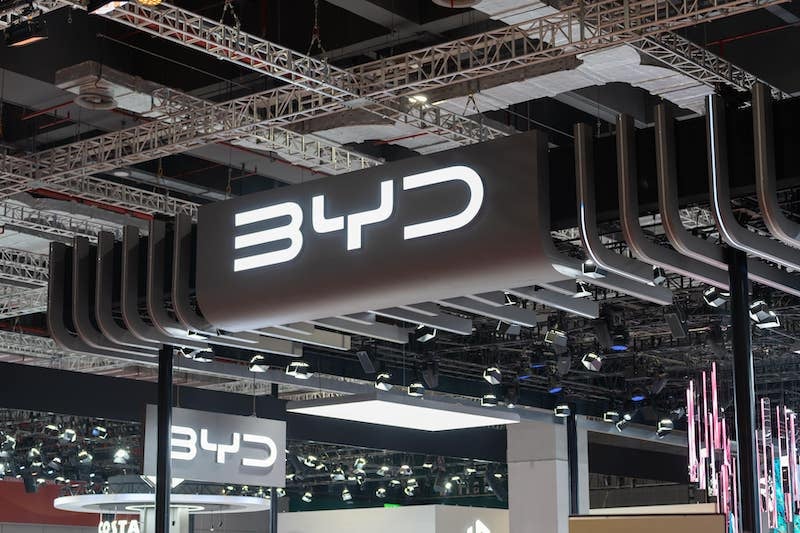
You might not have heard of BYD before, but the Chinese company is the world’s largest electric vehicle manufacturer and a market leader in Asia. BYD has been steadily growing its international presence, with a range of commercial vehicles, trucks, and buses hitting European and American roads. Now, the company is looking to break into the light commercial vehicle market with the BYD ETP3, building on its battery and EV manufacturing expertise and competing head-to-head with the likes of the Citroën e-Berlingo, Toyota ProAce, and Renault Kangoo Van E-Tech.
BYD ETP3 specs
The BYD ETP3 is built on the company’s passenger vehicle platform, with a 2,725 mm wheelbase and a payload of 780 kg. It comes in a single model, with a 45 kWh battery pack and 145 miles (233 km) range.
BYD ETP3 range
The BYD ETP3 has an estimated range of 145 miles (233 km).
BYD ETP3 battery
The BYD ETP3 comes with a 45 kWh battery.
BYD ETP3 price
The BYD ETP3 starts at €28,490*, depending on the configuration.
*The cost of a BYD ETP3 can vary based on your location and dealership. At the time of writing this article, we took this estimated price from BYD’s Dutch catalog price.
BYD ETP3 release date
At the time of writing, BYD has not yet confirmed global release dates for the BYD ETP3, but the ETP3 is available on the Dutch market as of late 2023.
BYD ETP3 charging speed
The time it takes to charge up a BYD ETP3 varies based on the power output and type of charger. We’ve calculated the charging time with the most common charging outputs at each charging level.
|
Charging level |
Charging output |
Charging times* |
|
Level 2 (AC) |
6.6 kW |
7h 34 min |
|
Level 3 (DC) |
50 kW |
37 min |
*These numbers provide a calculated estimation of charging times – from 0 to 100 percent (AC) and 20 to 80 (DC) percent state of charge (SOC) – and do not reflect actual charging times or real-life situations. For a more accurate representation of (or more information on) actual charging times, please refer to the original manufacturer or certified dealerships. The results are based on an equation that uses the standard battery size and average performance of charging stations as metrics and are rounded up for readability. The highest DC charging power is the maximum power supported by the vehicle.
Rivian Commercial Van
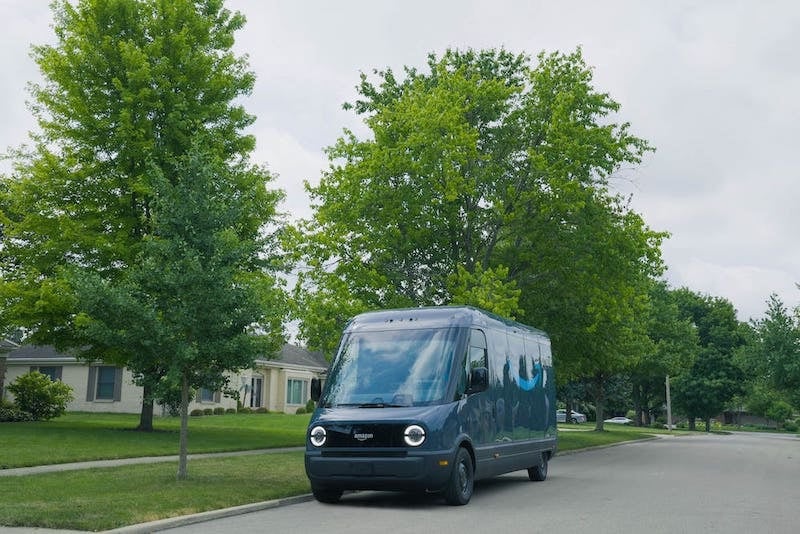 Picture via Rivian’s official website under copyright and image rights (for editorial use)
Picture via Rivian’s official website under copyright and image rights (for editorial use)
Originally built as a delivery vehicle exclusive to Amazon, Rivian is now making its Rivian Commercial Van available to other companies in the US starting in 2024. Designed with practicality and low operating costs in mind, the Rivian Commercial Vehicle promises to make the transition to electric mobility a breeze for fleets across the country.
Rivian Commercial Van specs
Rivian Commercial Van model variations
The Rivian Commercial Van comes in two models:
- The RCV EDV 500: The EDV 500 comes with around 161 miles (259 km) range and 500 cubic feet (14.2 m3) carrying capacity.
- The RCV EDV 700: The EDV 700 comes with up to 153 miles (246 km) range and 660 cubic feet (18.7 m3) carrying capacity.
Rivian Commercial Van range
The Rivian Commercial Van has a range of between 153 and 161 miles (246 or 259 km), depending on the model.
Rivian Commercial Van battery
At the time of writing, Rivian hasn’t confirmed the battery capacities for the Commercial Van.
Rivian Commercial Van price
The RCV Delivery 500 starts at $83,000*, and the RCV Delivery 700 starts at $87,000*, depending on the configuration.
*The cost of a Rivian Commercial Van can vary based on your location and dealership. At the time of writing this article, we took this estimated price from Rivian’s website.
Rivian Commercial Van release date
Rivian is expected to start delivering the Rivian Commercial Van to larger fleets in 2024, expanding to smaller-scale orders in 2025. At the time of writing, Rivian has not announced release dates outside the US.
Renault Trafic E-Tech
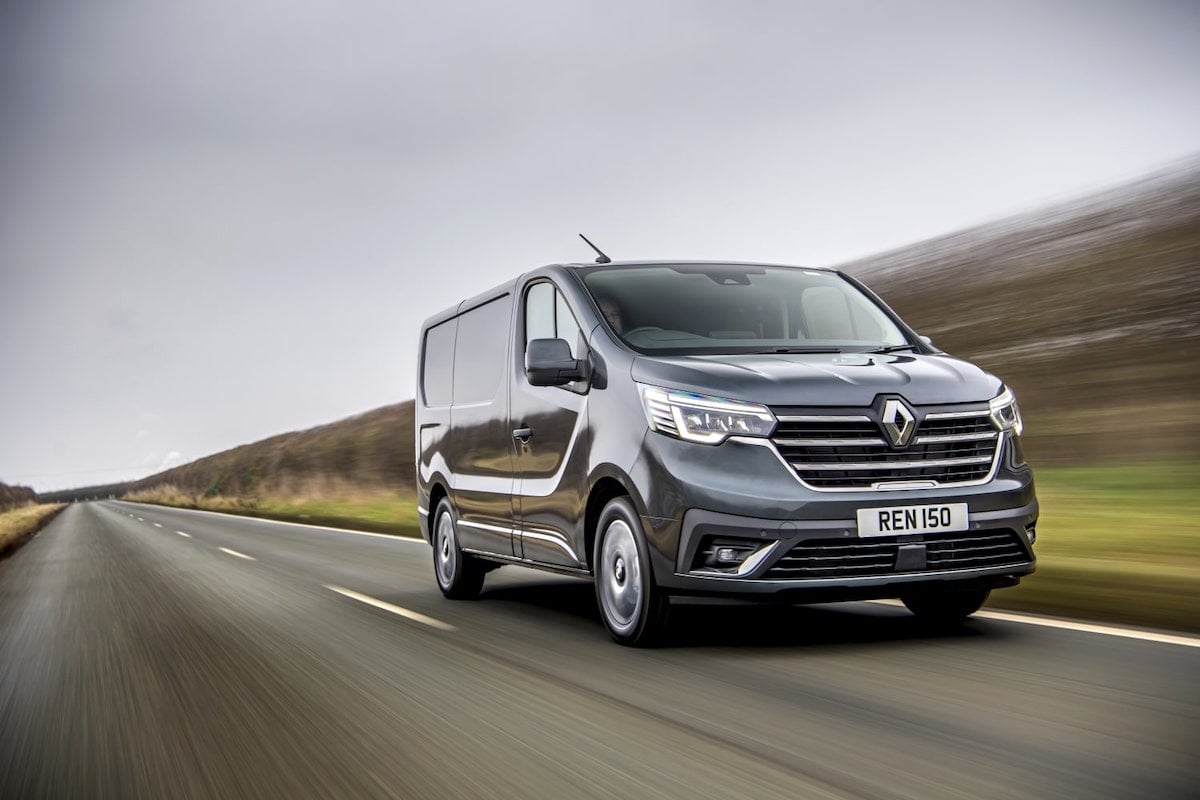 Picture via Renault’s official website under copyright and image rights (for editorial use)
Picture via Renault’s official website under copyright and image rights (for editorial use)
Renault is completing its lineup of electric light commercial vehicles with the E-Tech Trafic, joining the E-Tech Master and E-Tech Kangoo. Built on the existing combustion-engine model, the E-Tech Trafic has a carrying capacity between 5.8 and 8.9 m3 and a payload of up to 1.16 tons. Like the E-Tech Master and E-Tech Kangoo, the Renault Trafic E-Tech is one of the few LCVs to support up to 22 kW AC charging.
Renault Trafic E-Tech specs
Renault Trafic E-Tech model variations
The Renault Trafic E-Tech comes in a range of configurations, including three-panel van versions, two double cab panel van versions, and a flatbed version. All come with a 52 kWh battery and 185 miles (297 km) range.
Renault Trafic E-Tech range
The Renault Trafic E-Tech has an estimated range of 185 miles (297 km).
Renault Trafic E-Tech battery
The Renault Trafic E-Tech has a 52 kWh battery.
Renault Trafic E-Tech price
The Renault Trafic E-Tech starts from €33,500*, depending on the configuration.
*The cost of a Renault Trafic E-Tech can vary based on your location and dealership. At the time of writing this article, we took this estimated price from Renault’s French catalog price.
Renault Trafic E-Tech release date
The Renault Trafic E-Tech is expected to start shipping in select European countries at the end of 2023.
Renault Trafic E-Tech charging speed
The time it takes to charge up a Renault Trafic E-Tech varies based on the power output and type of charger. We’ve calculated the charging time with the most common charging outputs at each charging level.
|
Charging level |
Charging output |
Charging times* |
|
Level 2 (AC) |
7.4 kW |
7h 48 min |
|
Level 2 (AC) |
11 kW |
5h 15 min |
|
Level 2 (AC) |
22 kW |
2h 37 min |
|
Level 3 (DC) |
50 kW |
41 min |
*These numbers provide a calculated estimation of charging times – from 0 to 100 percent (AC) and 20 to 80 (DC) percent state of charge (SOC) – and do not reflect actual charging times or real-life situations. For a more accurate representation of (or more information on) actual charging times, please refer to the original manufacturer or certified dealerships. The results are based on an equation that uses the standard battery size and average performance of charging stations as metrics and are rounded up for readability. The highest DC charging power is the maximum power supported by the vehicle.
Maxus eDeliver 7
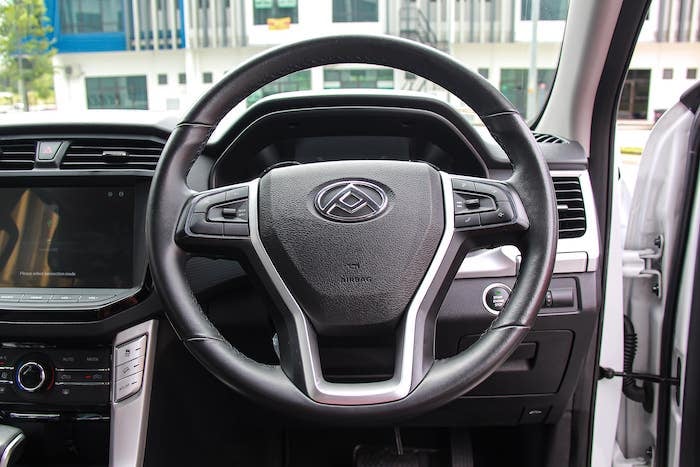
Another new entrant into the market, Chinese company Maxus specializes in electric commercial vehicles. The Maxus eDeliver 7 completes the brand’s line of light commercial vehicles as a mid-size LCV alongside the eDeliver 3 and eDeliver 9. With a payload of up to 1,135 kg and a 1,500 kg towing capacity, the Maxus eDeliver 7 is a versatile LCV for businesses in urban centers.
Maxus eDeliver 7 specs
Maxus eDeliver 7 model variations
The Maxus eDeliver 7 comes in one model, with a 77 kWh battery and 200 miles (318 km) range.
Maxus eDeliver 7 range
The Maxus eDeliver 7 has an estimated range of 200 miles (318 km).LCV
Maxus eDeliver 7 battery
The Maxus eDeliver 7 has a 77 kWh battery.
Maxus eDeliver 7 price
The Maxus eDeliver 7 starts from £44,995*, depending on the configuration.
*The cost of a Maxus eDeliver 7 can vary based on your location and dealership. At the time of writing this article, we took this estimated price from Maxus’ UK website.
Maxus eDeliver 7 release date
At the time of writing, the Maxus eDeliver 7 is available in the UK and expected to be released across other European markets in 2024. Maxus has not yet confirmed the global availability of the eDeliver 7.
Maxus eDeliver 7 charging speed
The time it takes to charge up a Maxus eDeliver 7 varies based on the power output and type of charger. We’ve calculated the charging time with the most common charging outputs at each charging level.
|
Charging level |
Charging output |
Charging times* |
|
Level 2 (AC) |
7.4 kW |
11h 33 min |
|
Level 2 (AC) |
11 kW |
7h 46 min |
|
Level 3 (DC) |
50 kW |
1h 01 min |
|
Level 3 (DC) |
90 kW |
36 min |
*These numbers provide a calculated estimation of charging times – from 0 to 100 percent (AC) and 20 to 80 (DC) percent state of charge (SOC) – and do not reflect actual charging times or real-life situations. For a more accurate representation of (or more information on) actual charging times, please refer to the original manufacturer or certified dealerships. The results are based on an equation that uses the standard battery size and average performance of charging stations as metrics and are rounded up for readability. The highest DC charging power is the maximum power supported by the vehicle.
Electric light commercial vehicles are developing rapidly, with each year expanding the range of new and existing models available. 2024 is shaping up to continue this trend, bringing a variety of new eLCVs that meet a range of needs.
Related articles
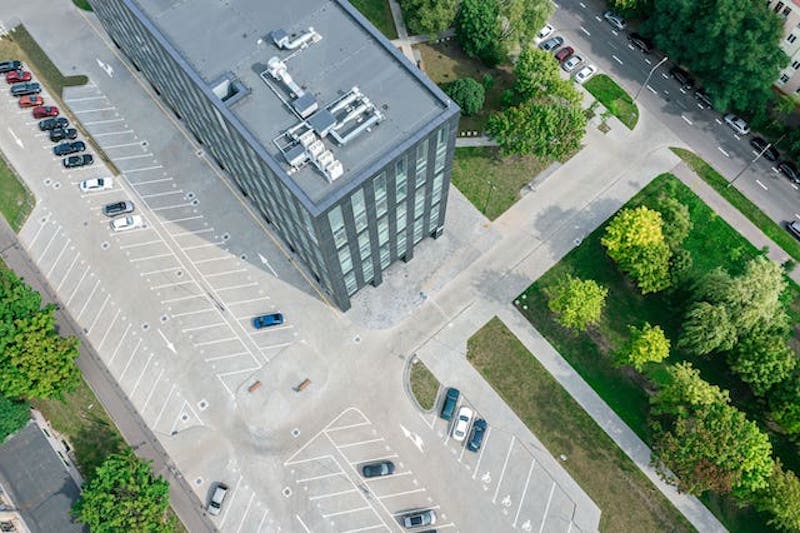
EV charging load management and the importance of cluster load balancing
Electric vehicle (EV) charging stations can add a substantial load onto your building’s power supply, often requiring...
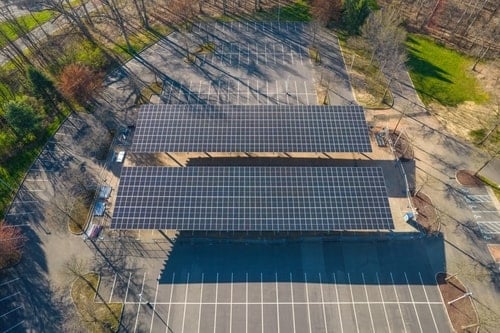
How to design a DC fast charging site
When thinking about installing DC fast charging stations on your site, careful consideration must be given to designing...

Grid connections for DC fast charging stations explained
The electrical grid is a large and established network delivering electricity from producers to consumers, and...